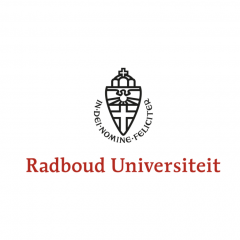
In case you think that cultural
theory and academic thought are behind the times, think again. For a few years
we have been teaching theories and concepts within the framework of ‘new materialism’ at the Department of Cultural
Studies, and guess what? This autumn the famous trend forecaster Lidewij Edelkoort announced a new trend for the next
year, in fact for the next decade: NEW MATERIALISM.
In capital letters.
Her trend forecasting skills show that
we academics are quite trendy and ahead of times.
What does new
materialism entail? For Edelkoort it involves a return to the materiality of
fabrics and craftsmanship in fashion design: “We are in an age of new
materialism, the making of materials comes first before form, colour, function”.
However, as cultural theorists we think new materialism goes much further than that. At the
heart of it all is ‘matter’. New materialism takes seriously the notion that objects,
art, fashion, even people, are made out of matter. Materiality thus refers to
quite different ‘things’: the designer’s and the wearer’s body, the garment, as
well as the fiber and fabric.
Matter ‘matters’, because
it has a certain force and agency. In other words, matter is not inert but vibrant, as Jane Bennett claims. New materialism looks
at how material powers affect our daily lives. Such a
perspective is productive for the study of art, fashion and culture, because it helps understand
cultural objects as active and meaningful actors in the world.

This is even more
important because of the pivotal role of technology today. Take the phenomenon
of ‘wearable technology’, as in the designs of Pauline van Dongen and Iris van Herpen. Clothes usually hang on the body, moving
along with it. But technologies, like solar cells, LED lights, 3D printing, or
electronics, enable the garments to move autonomously irrespective of the
wearer. As Kaori O’Connor aptly remarks: ‘Man-made fibres are not inert, they
have been created to do’ (2005, p.
53). Clothes then take on a life of their own, acquiring non-human agency, entangled with the human body. The
notion of material agency highlights the fact that the technologies establish
interaction between the garments and
the body, between human and non-human entities. Material agency, in other
words, is not located exclusively in the technology, or in the human body, but
in an assemblage of wearer, fashion, and technology.
The body, clothes, and
technologies: all of these things are made up of vibrant matter that ‘act’ and
‘do’. They do so in interactive and interdependent ways; together they become ‘creative entanglements’, as Tim Ingold calls it. To fully
understand the complexity of new materialism means to take into account not
merely the materiality of fabrics, as Lidewij Edelkoort suggests, but equally
the materiality of the humans that design and wear them. New materialism thus points
to a dynamic notion of life in which human bodies, fabrics, objects and
technologies are inextricably entangled.
